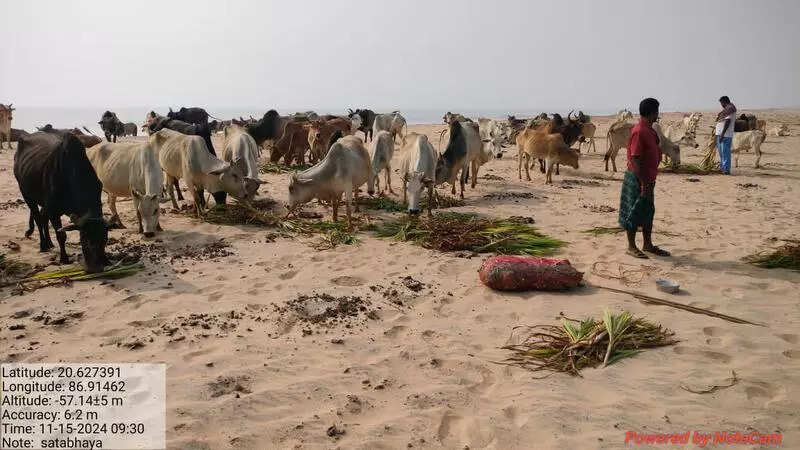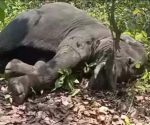Cattle Deaths in Kendrapada Due to Cyclone Dana: Scarcity of Fresh Water and Fodder Takes Toll |

Kendrapada: Numerous cattle have perished in the coastal region of Satabhaya panchayat in Kendrapada district, following Cyclone Dana‘s devastating impact in the state last month. The deaths are primarily attributed to the scarcity of fresh water and grass after seawater inundated grazing fields and ponds.
“Around 200 cattle died recently due to insufficient fodder. The cyclone made landfall at Habalikhati near Satabhaya, driving seawater into agricultural fields and grazing grounds across several villages under Rajnagar block,” sarpanch Prasana Parida said.
The affected areas, including Satabhaya, Kanhupur and Magarakandha villages, suffered extensive sand casting during the cyclone, rendering large tracts of land infertile. Local resident Sudrashan Rout said many villagers have abandoned their agricultural lands due to rapid deterioration in water quality.
“Within a decade, our village lost nearly 15 acres of grazing ground due to salinity ingress,” Nigamananda Rout, former sarpanch of Satabhaya, said. The situation has severely impacted local dairy farmers like Ajaya Mallick, who previously earned Rs 4,000 monthly from selling milk.
Dr Akshya Kumar Dalai, block veterinary officer of Rajnagar, said that cattle can die from salt poisoning if they consume excessive salt in their drinking water. “High-breed cows, introduced in the 1990s, are particularly vulnerable as they’re not adapted to local conditions,” he added.
Local authorities are now organizing health camps and providing fodder to affected cattle. They are also encouraging farmers to rear local variety cows, which show better immunity to salinity and climate change factors in coastal areas.
“Around 200 cattle died recently due to insufficient fodder. The cyclone made landfall at Habalikhati near Satabhaya, driving seawater into agricultural fields and grazing grounds across several villages under Rajnagar block,” sarpanch Prasana Parida said.
The affected areas, including Satabhaya, Kanhupur and Magarakandha villages, suffered extensive sand casting during the cyclone, rendering large tracts of land infertile. Local resident Sudrashan Rout said many villagers have abandoned their agricultural lands due to rapid deterioration in water quality.
“Within a decade, our village lost nearly 15 acres of grazing ground due to salinity ingress,” Nigamananda Rout, former sarpanch of Satabhaya, said. The situation has severely impacted local dairy farmers like Ajaya Mallick, who previously earned Rs 4,000 monthly from selling milk.
Dr Akshya Kumar Dalai, block veterinary officer of Rajnagar, said that cattle can die from salt poisoning if they consume excessive salt in their drinking water. “High-breed cows, introduced in the 1990s, are particularly vulnerable as they’re not adapted to local conditions,” he added.
Local authorities are now organizing health camps and providing fodder to affected cattle. They are also encouraging farmers to rear local variety cows, which show better immunity to salinity and climate change factors in coastal areas.
















